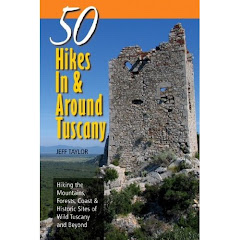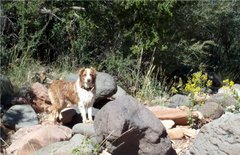Distance: 3 miles roundtrip (4.8 km)
Elevation: 5,965 - 6,005 feet (1819 - 1830 m)
Difficulty: Easy
Time of Year: Anytime (watch for ice in winter and flash floods and extreme heat in summer)
 |
| Mule Canyon Pueblo - 0.2 miles from the road to the canyon itself |
Located within Mule Canyon on the Grand Gulch Plateau, about 19 west of Blanding, UT on UT-95 is the House on Fire Ruins. Famous for its flaming red stratified rocks on the roof about the structure, the ruins are also located in a beautifully sculpted redrock canyon just above the seemingly monotonous juniper woodlands on the mesa top. Mule Canyon also contains several over ruins and petroglyph panels within the next 4 miles or so of the canyon, indicating this was obviously an important site for the ancient Puebloan peoples. On of these sites is found on the rim top, right off the highway.
 |
| The view from the trailhead above the canyon |
To access the site, drive on UT-95 to the Mule Canyon Pueblo BLM site. Here there are the remains of the foundations of several rooms and a large restored kiva site. However, to get down into the canyon itself to see the House on Fire Ruins, backtrack east on UT-95 0.2 miles and look for a dirt road branching off to the left. Follow this road down to the "bridge" crossing Mule Canyon. The trail begins to the west here. There is a fee of $2 per person to access this site.
The trail descends into the canyon and is easy to follow up the dry creek bed. There are beautiful slickrock formations along the way for the next 1.5 miles. After about 20 minutes of hiking, start looking up to the right side of the canyon and you will see three structures tucked under the large overhanging boulder.
Located within the structures are old packrat middens filled with rat droppings and thick dark smoke scars on the roof. The structures are so short, it is really hard to imagine people living within these structures. One wonders how much time they actually spent in these, perhaps only to lay down and sleep at night in the winter. The site, like many in this region, is on the south-facing slope, which means they would get the warm winter sun to warm up, while being in the shadows when the sun is high in the sky in summer.
 |
| Packrat droppings and plant materials on the floor and smoke scars on the roof |
If the lighting is right, the ceiling appears to be a flaming glow of red off the roof. If not, then it is just drab layers of sedimentary rock. Some of the most brilliant images on the internet are surely heavily altered using photoshop. But, whatever the lighting, its certainly a beautiful site in an amazing canyon.
You can continue down the canyon to see another three more structures over the next four miles. But, if you need to hit the road to see more sites along the way, such as the Fallen Rock Ruins in Road Canyon, then this is a good place to turn back and head 1.5 miles back to the trailhead.






















